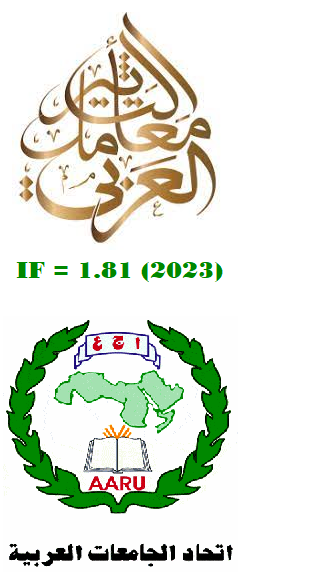Client's Satisfaction Regarding Family Planning in Some of Primary Health Care Centers in Erbil City
Abstract
Today mothers or the clients who attending to hospitals or Primary Health Care Centers prefer high-quality care services so they interact everybody from the reception, admission staff, doctors, nurses, ward staff, ambulance, personnel, so clients are satisfied with health services if the physicians and nurses worked properly and with good quality. If the performance is good and perfect mothers or clients are highly satisfied. The objectives of the study are to identify the client’s satisfaction with family planning. A descriptive, cross-sectional design. Anon-probability convenient methods were used. The sample was included one hundred women who attended to Primary Health Care Centers in Erbil City. The study conducted in main primary Health Care Centers in Erbil from September 2015 to September 2016. The data collection was collected by the interview technique with clients and women depending on the questionnaire. The questionnaire was used for data collection, including three parts; part one socio-demographic characteristics for sample study and; part two included questions related to client's satisfaction regarding practices about family planning methods and; part three questions related to their satisfaction regarding knowledge of family planning methods, so depending on scoring system for data collection as (1 for Yes, and 2 for No). The study revealed that three levels of client’s satisfaction (good 23%, fair 44%, 33% bad) regarding family planning and there was no significant association between most of the variables and their satisfaction except their level of education and age so there was highly significant association between age, education level and their satisfaction with family planning knowledge and practices. Majority of the sample study were from urban, and most of them were illiterate. The study revealed that there were three levels of satisfaction about family planning, and there was no significant association between most of the variables and client’s satisfaction regarding family planning except age and their educational level so there was the highly significant association between these two variables and client’s satisfaction. .
Downloads
References
Agha, S., & Do, M. (2009). The quality of family services and client satisfaction in the public and private sectors in Kenya. International Journal for Quality in Health Care, 21(2), 87-96.
Blanc, A. K., Curtis, S. L., & Croft, T. N. (2002). Monitoring contraceptive continuation: Links to fertility outcomes and quality of care. Studies in Family Planning, 33(2), 127-140.
Central Bureau of Statistics. (2003). Kenya Demographic and Health Survey. Calverton, Marylan: Central Bureau of Statistics, Ministry of Health and ORC Marco.
Discrete Data in Principal, Component Analysis. (2004). Applications to Socio-Economic, Indices. CPC/MEASURE Working, Paper Carolina Population Center. North Carolina: University of North Carolina at Chapel Hill.
Ghana Statistical Service. (2004). Ghana Demographic and Health Survey 2003. Calverton, Maryland: Ghana Statistical Service, NMIMR, and ORC Marco.
Hanson, K., Kumaranayake, L., & Thomas, I. (2004). Ends versus means: The role of markets in expanding access to contraceptives. Health Policy Plan, 16(2), 125-136.
Hutchinson, P. L., Do, M., & Agha, S. (2011). Measuring client satisfaction and the quality of family planning services: A comparative analysis of public and private health facilities in Tanzania, Kenyans Ghana. Health Services Research, 11, 203.
Lin, X., Hotchkiss, D. R., & Bose, S. (2008). The effectiveness of health care services in developing countries: A review of the evidence. Health Policy Plan,23(1), 1-13.
Mills, A., Brugha, R., Hanson, K., & McPakem, B. (2002). What can be done about the private health sector in low-income countries? Bulletin of the World Health Organization, 80(4), 330.
National Bureau of Statistic. (2005). Tanzania Demographic and Health Survey 2004-5. Dar Es, Salaam, Tanzania: National Bureau Statistic and ORC Marco.
National Bureau of Statistics., Kolenikov, S., & Angeles, G. (2006). The Use of [Tanzania] and Macro International, Inc.: Tanzania Service Provision, Assessment Survey. Dar Es, Salaam, Tanzania: National Bureau of, Statistics and Macro International Inc.
Vijaykumar, B., & Rashmi. (2010). Client satisfaction in Rural India for primary health care a tool for quality assessment. Al Ameen Journal of Medical Sciences, 3(2), 109-114.
Williams, T., Schutt-Aine, J., & Cuca, Y. (2000). Measuring family planning service quality through client exit interviews. International Family Planning Perspectives, 26(2), 9.
World Health Organization. (2001). The World Health Report, Health Systems: Improving Performance. Geneva: World Health Organization.
World Health Organization. (2006). The World Health Report, Working Together for Health. Geneva: World Health Organization.
Zwi, A. B., Brugha, R., & Smith, E. (2001). Private health care in developing countries. BMJ, 323(7311), 463-464.
Copyright (c) 2020 kareem F. Aziz

This work is licensed under a Creative Commons Attribution-NonCommercial-NoDerivatives 4.0 International License.
Authors who publish with this journal agree to the following terms:
1. Authors retain copyright and grant the journal right of first publication with the work simultaneously licensed under a Creative Commons Attribution License [CC BY-NC-ND 4.0] that allows others to share the work with an acknowledgment of the work's authorship and initial publication in this journal.
2. Authors are able to enter into separate, additional contractual arrangements for the non-exclusive distribution of the journal's published version of the work (e.g., post it to an institutional repository or publish it in a book), with an acknowledgment of its initial publication in this journal.
3. Authors are permitted and encouraged to post their work online (e.g., in institutional repositories or on their website) prior to and during the submission process, as it can lead to productive exchanges, as well as earlier and greater citation of published work (See The Effect of Open Access).









